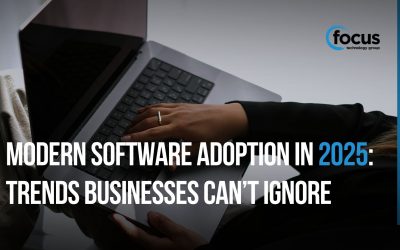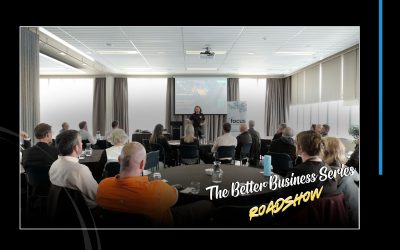At Focus, we have seen a lot of ERP implementations across a range of industries and company types. As we are a mid-sized company that has experienced growth, we are aware of the pains that this can cause.
We know what it takes to succeed and how to mitigate the challenges that invariably appear at the most inconvenient times.
We are currently running a four-part webinar series in which we are sharing insights into the preparation, evaluation, implementation and on-going roadmap phases involved in enabling a business with a modern ERP solution that will assist in rather than hinder growth.
Our first webinar was titled Six Critical Steps to Managing Business Growth and in this article we give an overview of these six steps.

Step 1: Think Long Term
Think long-term, think along the lines that you are investing in a company asset and you want a long term return on that asset. This is not an IT project or a finance project. This is a business project and must be driven with business goals and benefits in mind.
Investing in a system that only meets your needs now, may prevent you from having the flexibility that you need to grow your business in the future.

Step 2: Know your business
A new ERP system isn’t just a major investment; it’s a catalyst for change. To create a positive environment for change, you first need to take an honest look at how your business is performing. Questions to ask yourself are:
- Are profits stagnant or declining?
- Are competitors getting ahead – or worse – taking business from you?
- Do your staff feel motivated?
- How old are your business systems?
- Are they working for you, or actually hindering you?
- Are you equipped for growth?

Step 3: Get everyone on the bus
To create a positive climate for change, you need the support of everyone in your company, they all have their own perspective on how your business works and their input should be sought. It is also key to have management at the highest level involved and engaged in the project.
By making the project transparent and showing that their views are valued, staff will help to create that positive environment for change.

Step 4: Create an implementation team
The importance of putting the right team in place cannot be over-stated. Keep the numbers as tight as possible, with the heads of each department that will use the system daily being involved. If the team is too big, decisions are not made and the project becomes cumbersome to progress. If the team is too small, then there is the potential for key elements to be missed.
If your strategic goals are clearly defined and the time is taken to achieve them correctly, you’ll end up with a system that everyone is happy with – not just because it does what you intended, but because those who are using it have that sense of ownership and empowerment, which is the ultimate aim of a successful ERP implementation.

Step 5: Evaluate your needs
Firstly, you must have a clear picture in your mind WHY you need an ERP system. Having addressed the shortcomings, you must also clearly understand the goals you wish to achieve.
With your goals in mind, you can then start to look more closely at your system requirements.

Step 6: Learn what you want to see in a demo
Identify what scenarios and processes are critical to your business that you need to see a system do for your business; then pull that information into a pack for vendors. The more a customer drives the product demonstration, the more benefit that business will get out of it.
In the second webinar of this series, we go into demonstrations in greater detail. You can find out more about our webinar series here.







